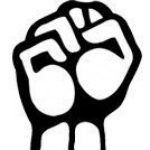 Of course I am happy about the ceasefire between Israel and Hamas. After eight days of pounding Gaza’s population, and the barrage of rockets on Israeli civilians, any cessation in hostilities is welcome. While I am fully aware of the horrors faced by friends in Tel Aviv and Jerusalem, this attack has been so much worse for the people of Gaza just four years after operation ‘Cast Lead’, and of course also for people in the south of Israel. During the eight days173 Palestinians were killed (113 of thom civilians, 38 children and 13 women)
Of course I am happy about the ceasefire between Israel and Hamas. After eight days of pounding Gaza’s population, and the barrage of rockets on Israeli civilians, any cessation in hostilities is welcome. While I am fully aware of the horrors faced by friends in Tel Aviv and Jerusalem, this attack has been so much worse for the people of Gaza just four years after operation ‘Cast Lead’, and of course also for people in the south of Israel. During the eight days173 Palestinians were killed (113 of thom civilians, 38 children and 13 women)
and 6 Israelis (no children) were killed. In the year preceding the onslaught, 64 Palestinians were killed in Gaza, 5 in the West Bank, and no Israelis. Since the first rocket fell on Israeli soil in April 2001, 59 Israelis were killed and 4,717 Palestinian.
Meanwhile, the US gave Israel 8.2m dollars per day. The reality of the death of children and the devastation in Gaza has been whitewashed in the western media as all social networks report.
The conflagration could never achieve its aims – the Israeli military did not stop the rockers and the rockets did not stop the Israeli military attack. But I cannot help thinking about the inevitability and imbalance of it all. There are many often forgotten but worth retelling facts about Gaza, as the Israeli (Jewish) blogger Eyal Clyne documents. The Gaza ‘Strip’ is an artificial space created by Israel after its establishment in 1948, when Israel chose not to incorporate it. Most Gazans are 1948 refugees, not allowed to return to their homes. Gaza was forcibly governed by Egypt until it was occupied by Israel in 1967, when a third of it was confiscated to build military camps and Jewish settlements.
During this time Israel impoverished Gaza whose people had no other source of income besides working in Israel for minimum wage. However, since the 1993 Oslo Accords, they were no longer allowed to work in Israel and 80% of Gazans live on 2 dollars per day.
Although Israel unilaterally ‘disengaged’ from Gaza in 2005, it never stopped occupying it, still controlling the movement of people and goods, Gaza’s territorial waters, radio waves, fuel, electricity and airspace. The tunnels and rockets are a response to the fence Israel constructed around the Gaza Strip. This means dire shortage of basic products not approved by Israel such as water purifiers, medical equipment and spare parts for hospitals, cement, perishable goods and at times even flour. In 2006 Israel bombed the electricity station in reaction to the abduction of a soldier, making Gaza dependent on Israel for electricity and other fuel supplies.
Israel had assisted the establishment of Hamas as an antidote to the PLO and continues to aid its growth by its punitive policies. George Bush’s regime gave Israel free range and financed its war against Gaza. Since 2004 Israel has carried out six sea, air and land operations against Gaza.
Since 2006 Israel has been ignoring Hamas’s proposals for a two state solution, backed by the Arab League. Ceasefires have been regularly broken by Israel, which also kept UN inspectors and journalists out of Gaza.
Despite Israel’s argument that Hamas chooses to locate its rocket launchers within the civilian population, Gaza civilians have nowhere to run when artillery, tanks, cannons, helicopters and planes attack, and it is inevitable that the victims would be civilians. Clyne concludes: ‘Israeli history is defined by the dispossession of the Palestinians. We expelled them in 1948. When they tried to return, we called them “infiltrators” and shot them back beyond our borders. Since 1967 they resisted the occupation in two intifadas, inside Israel, in suicide bombings. But Israel keeps ignoring their national catastrophe, and is prepared to pay in blood, money and international isolation to continue denying that this is about a people whose land we took by force’.

You must be logged in to post a comment.